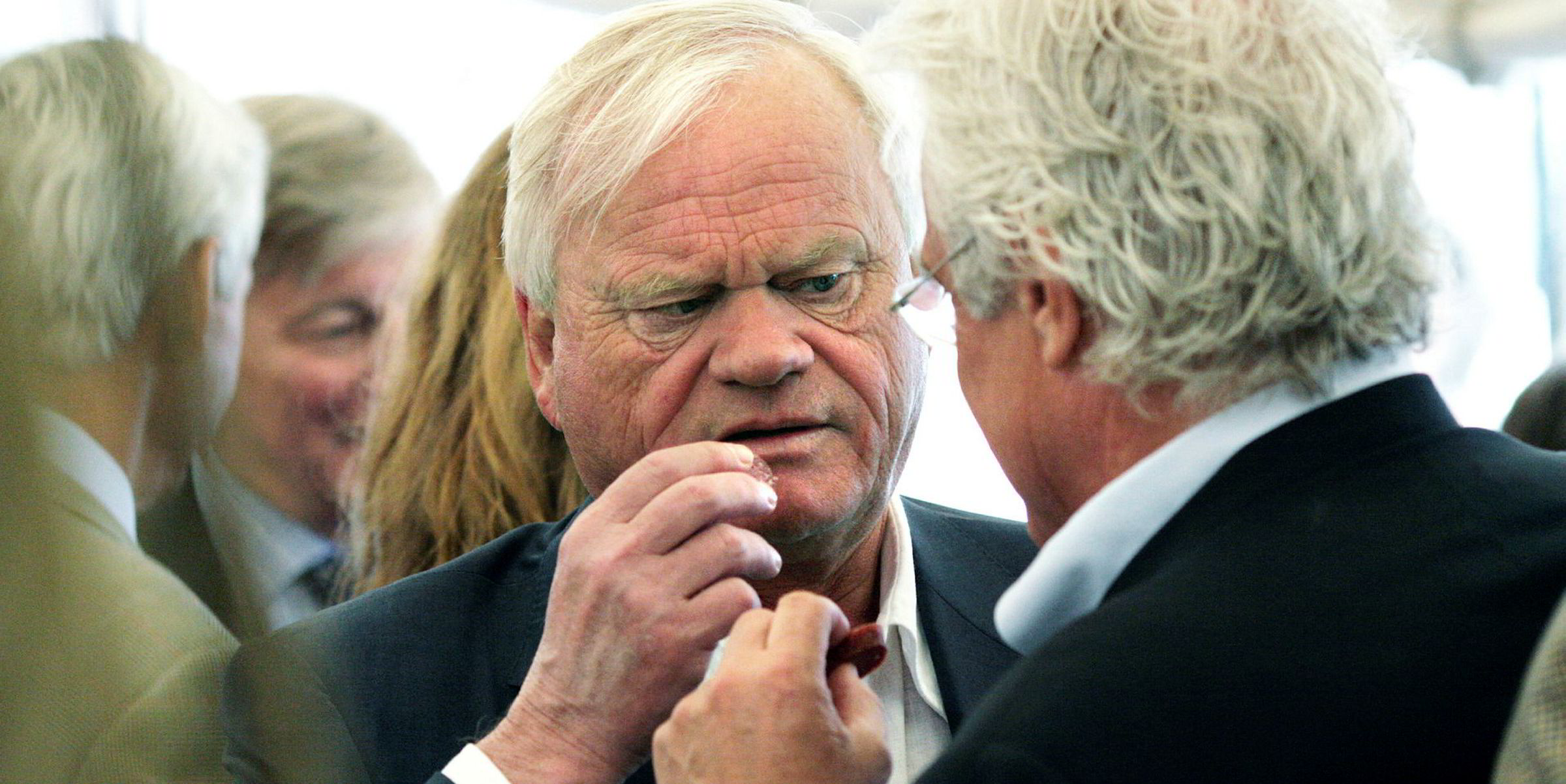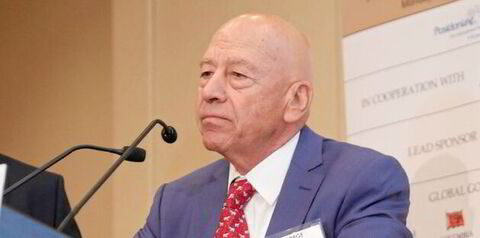John Fredriksen's Frontline has logged a big return to profit in the first quarter as rates jumped.
The tanker owner said net earnings to 31 March were $40.11m, against a loss of $13.55m in 2018.
Revenue grew to $238.27m from $169.62m as average spot daily time charter equivalent rates for VLCCs, suezmaxes and LR2/aframaxes reached $35,700, $28,200 and $24,000, respectively.
This compares to $28,400, $17,300 and $14,900 in the fourth quarter.
For the second quarter, it is estimating a rate of $34,800 for its contracted 63% of VLCC vessel days, due to the impact of ballast days at the end of the quarter.
CEO Robert Hvide Macleod said: "Following a strong start to the year, crude oil tanker rates weakened significantly in recent months due to elevated levels of refinery maintenance, decrease in oil supply and a number of newbuildings delivering.
"However, a market improvement is expected in the second half of the year as refinery capacity returns and oil volumes return to the markets."
He added: "In particular, market analysts expect incremental crude demand to be generated by upcoming IMO 2020 regulations as increased inputs will be required to meet new demand for low sulphur fuels."
The tanker market pulled back in January due to OPEC production cuts and a high level of newbuilding deliveries after a strong end to 2018, Frontline said.
The middle of the first quarter saw rates firming significantly, however, driven mainly by an increase in US exports.
Guidance "higher than peers"
Frode Morkedal of Clarkson Platou Securities said the EBITDA of $97m was below its estimate of $108m, but close to consensus.
The rates guidance of $34,800 per day for VLCCs in the second quarter is "higher than peers", he added.
But the company is again warning that the new load-to-discharge accounting method means that average rates could be lower if there are more unpaid ballast days at the end of the quarter, Morkedal said.
"In sum the relatively strong guidance for 2Q19 is therefore probably less firm than at first glance," he added. "By comparison its cash breakeven rate is $24,700 per day for the remainder of 2019."
Rebound ahead
The market then came off primarily due to extended refinery maintenance in preparations for IMO 2020 and both new and persistent supply disruptions.
CFO Inger Klemp said: “Following strong financial results in the first quarter of 2019 Frontline has remained focused on further strengthening its balance sheet.
"Based on market expectations and competitive breakeven levels, the company is well positioned to generate significant cash flow and create value for its shareholders.”
In the second half, it is expecting rates to rebound as refinery maintenance is expected to be less pronounced than last year as refineries will look to increase production ahead of the implementation of IMO 2020 regulations.
"Despite continued deliveries of newbuilding vessels, effective crude tanker capacity is expected to slow as vessels are taken out of service for regular dockings, scrubber or ballast water installation and preparation of vessel fuel tanks for the IMO 2020 regulations," it added.
Existing charter contracts for two suezmaxes and an LR2 expire in the first quarter of 2020.





